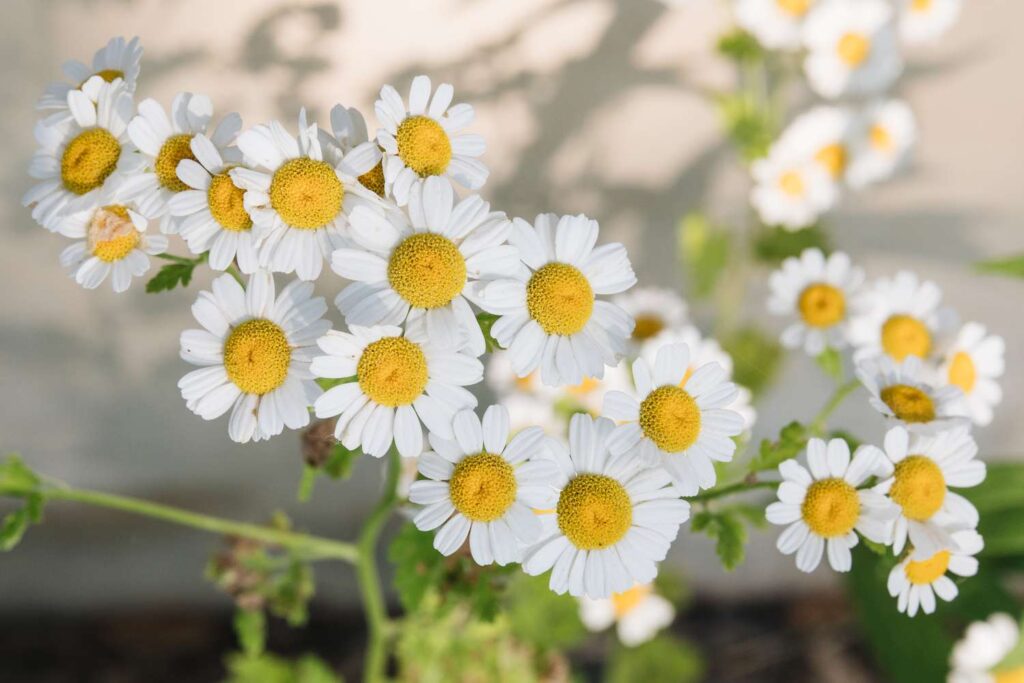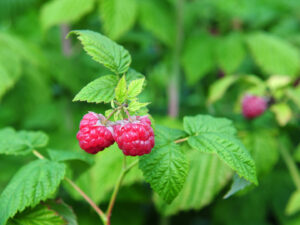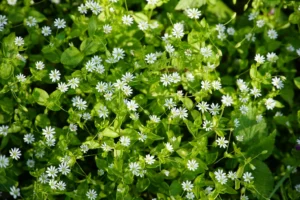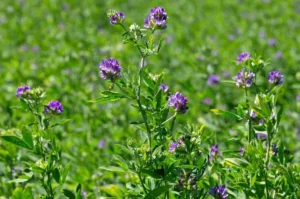Chamomile Flowers

Chamomile Flowers are small, daisy-like blossoms known for their soothing and calming properties. These flowers have been used for centuries in herbal medicine, primarily as a remedy for anxiety, insomnia, and digestive issues. Chamomile is also popular in skincare and wellness products for its gentle and anti-inflammatory effects.
1. Size:
- Chamomile flowers are small, usually about 1 to 2 centimeters in diameter.
- The flowers consist of white petals surrounding a yellow central disc.
2. Color:
- The petals are white, while the central disc is bright yellow, giving the flowers a striking appearance.
3. Texture:
- The petals are delicate and soft to the touch, while the central disc is slightly more textured.
4. Fragrance:
- Chamomile has a mild, sweet, and apple-like fragrance, which is soothing and pleasant.
5. Uses:
- Sleep Aid: Chamomile is widely used as a natural remedy to promote relaxation and improve sleep quality. It is commonly consumed as a tea before bedtime.
- Digestive Health: The flowers are used to alleviate digestive discomfort, including bloating, gas, and indigestion.
- Skin Care: Chamomile is often included in skincare products for its anti-inflammatory and calming effects on irritated or sensitive skin.
- Stress Relief: The calming properties of chamomile make it a popular ingredient in aromatherapy and stress-relief products.
6. Habitat:
- Chamomile is native to Europe and Western Asia but is widely cultivated around the world. It thrives in well-drained, sandy soils and prefers full sunlight.
7. Cultural Significance:
- Chamomile has been a part of traditional medicine for centuries, valued for its calming and healing properties. It is often associated with relaxation and tranquility and is a common ingredient in herbal teas and natural remedies.
Spiritual Properties
- Calming Energy: Chamomile is often used in spiritual practices to promote peace and tranquility. It is believed to help calm the mind and spirit, making it a popular choice for rituals focused on relaxation and emotional healing.
- Protection and Purification: Chamomile is thought to offer protection and purification, often used in cleansing rituals to remove negative energies and promote positive, healing vibrations.
Medicinal Properties
- Anti-Inflammatory: Chamomile contains compounds like bisabolol and chamazulene that have anti-inflammatory properties, making it effective in treating skin irritations and inflammatory conditions.
- Sedative and Relaxant: The herb is known for its mild sedative effects, making it a common remedy for anxiety, stress, and insomnia. It helps relax the nervous system and promote restful sleep.
- Digestive Aid: Chamomile is used to soothe the digestive tract, helping to relieve symptoms of indigestion, bloating, and gas. It is also believed to help with colic and other digestive disorders.
Adverse Actions & Side Effects
- Allergic Reactions: Some individuals, particularly those allergic to plants in the Asteraceae family (like ragweed), may experience allergic reactions to chamomile.
- Blood Thinning: Chamomile may have mild blood-thinning effects, which could interact with anticoagulant medications.
Side Effects:
- Drowsiness: Consuming large amounts of chamomile, especially in tea form, may cause drowsiness.
- Nausea: In rare cases, high doses of chamomile might lead to nausea or vomiting.
- Skin Irritation: Topical use of chamomile may cause skin irritation in some individuals, particularly those with sensitive skin.

Opopanax Resin (Sweet Myrrh)
Opopanax Resin (Sweet Myrrh) Opopanax Resin (Sweet Myrrh) is an aromatic resin with a sweet, balsamic fragrance. It is derived from the Commiphora species, primarily

Raspberry Leaf
Raspberry Leaf Raspberry Leaf is a versatile herb that comes from the red raspberry plant. It has been used for centuries in traditional medicine for

Herbal-Infused Protection Honey
Herbal-Infused Protection Honey This herbal-infused honey is perfect for enhancing spiritual protection and promoting healing energy when used in meals or teas. It creates a

Lobelia
Lobelia Lobelia is an herb known for its distinctive blue flowers and diverse medicinal properties. It has been used in traditional medicine for its respiratory

Chickweed
Chickweed Chickweed is a small, delicate annual herb that thrives in cool, moist environments. It is commonly found in gardens, lawns, and meadows, often considered

Alfalfa Leaves
Alfalfa Leaves Alfalfa is a perennial flowering plant from the legume family, known for its high nutrient content. It is widely cultivated as a forage